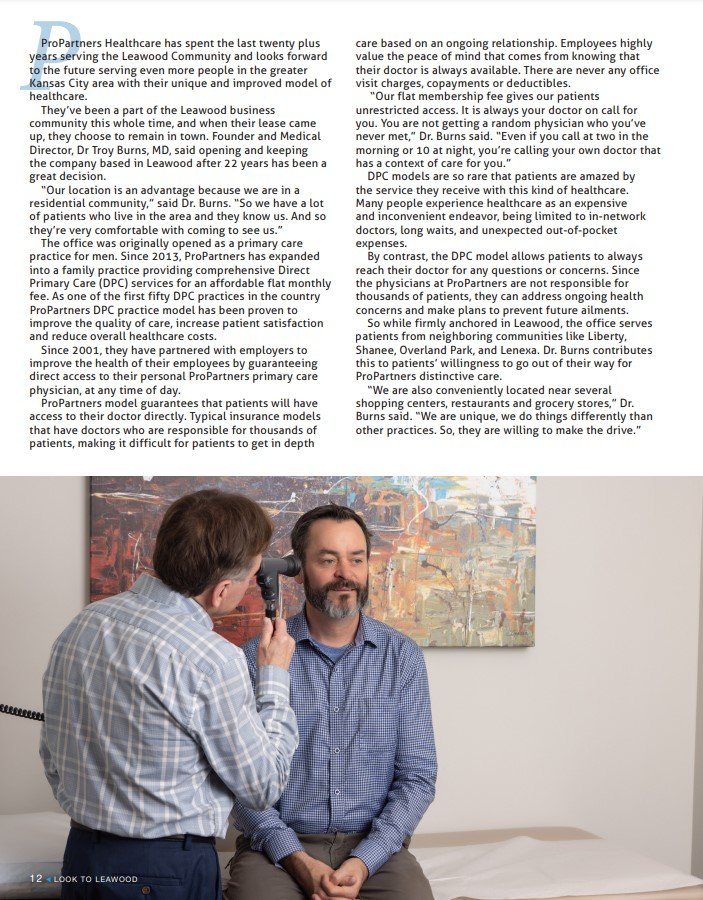An excerpt from Medical Answers Now!: How Direct Primary Care Guarantees Fast Access to Your Doctor.
Involvement in Primary Care
Virtually everyone understands the importance of major medical insurance as it relates to unexpected high-dollar care for severe injuries and significant medical conditions, but the value equation for health insurance is quite different when applied to coverage for primary care services. The full potential cost for primary care services is neither expensive nor unpredictable. Routine and preventive care as well as the management of most acute illness and the majority of chronic disease processes by primary care physicians would be quite affordable for most Americans even if they had no health insurance at all. In fact, the involvement of health insurance in the relationship between patients and their primary care physicians introduces several major challenges and disadvantages.
Here are the six primary areas of concern.
1. Non-Value-Added Middlemen Insurance involvement makes primary care more expensive. It is estimated that as much as 40% of revenue paid to primary care physicians who participate with major health insurance goes to pay for administrative overhead, claims processing, insurance company profits, and the compensation of insurance brokers. This list of middlemen who mediate the interactions and care that you receive from your doctor do not actually add value to your quality of care or patient experience. They do add significant costs for your doctor, your employer, and ultimately you. In reality, inserting these middlemen between you and your doctor makes it more challenging for doctors to do their job.
Who pays your doctor? The answer makes all the difference to your access and customer service. So who pays your doctor? Your insurance company. Realistically, your doctor doesn’t work for you. They work for your insurance company and spend a lot of time and money meeting their requirements. This insurance
middleman increases your cost, kills convenience, and leads to poor health. Ask yourself how your care would be different if you and your physician weren’t paying for these middlemen and your doctor wasn’t working, in a manner of speaking, for your insurance company.
2. Volume-Based Care
When the delivery of healthcare services is adjudicated by insurance on a fee-for-service basis, your care is volume-based. Every service you receive, including lab work, other diagnostic The Effects of Insurance Involvement on Primary Care tests, all treatments, examinations, discussions, and time with your doctor, only happens if these services are individually deemed covered and reimbursable by your insurance plan.
For physicians practicing under this (nearly universal) model, they are only paid if they are able to justify each individual service they render with codes (CPT procedure codes for specific ICD-10 diagnostic codes) and documentation that are acceptable to the insurance carrier. The amount your doctor is paid on a fee-for-service basis is locked and predetermined by a provider contract between your doctor and your insurance company. Given the ever-increasing administrative and regulatory costs to operate a medical practice, the only way participating providers can sustain practice viability is by increasing the volume of patients they see. This dynamic of volume-based care is the main reason that primary care physicians are always rushed and access to care is limited, causing poor patient experience, worse health outcomes, and more downstream expense (as previously noted).
3. Misaligned Incentives
Why do doctors do what they do? Why do they require the visits that they do? Why do they order the tests that they order? The treatments? Make the referrals they make? Medical doctors are regularly found to be among the most trustworthy professions (second only to nurses), but the vast majority of doctors practice in an environment that incentivizes them to ingratiate themselves by their ordering practices. Whether self-employed or working under employment agreements with medical practices that are most often owned by hospital systems, your doctor’s take-home pay is largely determined by what the doctor’s office bills. Just as volume-based care adds costs to the system, these misaligned incentives between you, your insurance company, and the ordering physician also add to the number of medical services
that are performed. Not only is physician compensation tied to the volume of patient visits that the doctor is able to accommodate into an overly busy schedule, but physicians may also be reimbursed directly or indirectly based on the number of ancillary services they order. These ancillary services include blood tests, other diagnostic tests, and treatments that they deliver in their office or through affiliated entities.
Hospitals, specifically, benefit greatly from the downstream medical care that is referred to their facilities by primary care physicians working directly for hospital-owned medical practices. This is the reason that their employment agreements typically compensate them based on their ordering practices. In this insurance-based fee-for-service system, even the most altruistic physicians may be ordering office visits, tests, treatments, and referrals that are questionable or altogether unnecessary. Your doctor’s incentives are rarely ever actually in line with yours.
4. Noncovered Services
There is another side to the coin. The ubiquitous volume based, insurance-participating fee-for-service primary care practice model also may result in under delivery of important medical services. Some important diagnostic and treatment services are deemed to be noncovered in certain situations. If your insurance carrier is unwilling to reimburse your doctor for a test or treatment that the doctor feels is important, the doctor will be less likely to recommend it. Physicians often The Effects of Insurance involvement on Primary Care know or can determine via a prior authorization process if your specific insurance plan will cover a test or treatment that they are considering. If insurance is not willing to cover the procedure (or if it would be subject to a very high deductible and out-of pocket expense to the patient), your doctor may choose not to recommend the procedure due to concern about your direct expense or fear that they may not collect payment at all. This is an example of the common reality that your doctor doesn’t work for you but is beholden to your insurance company. They are conditioned that if insurance will not pay for a service, they “can’t” order it. As you can imagine, this mindset has great potential to result in a compromise to the quality of patient care.
5. Hidden True Patient Costs
Health insurance is a shell game. The true costs of healthcare services and the mark-up at each step in the system of delivery are well hidden. What does a service cost your doctor or the medical office to provide? What does it cost your employer? The insurance company? As a patient or covered member, you may never know. Eventually, you will find out what it will cost you personally—but not until well after you have received the service. The complexity and multiple middlemen involved in health insurance pricing, repricing, and reimbursement currently make it nearly impossible for individuals to determine the real costs for medical services that they receive. Insurance premiums continue to skyrocket. Employers “share”
an increasing amount and percentage of these premiums with their employees who are also left with higher out-of-pocket expenses from rising deductibles and copayments for all types of medical services.
In some cases, especially with services provided and ordered by primary care physicians, it is possible to identify true market-based cash prices. What would certain medical services (office visits, lab tests, x-rays, MRIs, prescription medications, for example) cost if you didn’t have insurance at all? It is fairly common for out-of-pocket payments for diagnostic and treatment services that are delivered by primary care physicians and filed with health insurance to exceed the market-based cash prices that could be paid (without insurance involvement) for the same services. The fact is, most patients never know it when their health insurance is delivering a penalty rather than a financial benefit. Historically, these disparities have not been disclosed by insurers. This longstanding industry practice leaves most patients overpaying for
some medical services on a regular basis.
6. Deterrents to Care
Health insurance is designed to limit how often and how quickly people go to the doctor. This is particularly true with primary care. Copayments, deductibles, and other out-of-pocket expenses built into insurance plans have proven to deter patients from seeking timely and appropriate primary care. As health
insurance has become increasingly expensive, deductibles and out-of-pocket costs have increased in order to keep premiums from rising even higher. When accessing most primary care services, patients pay first before their insurance kicks in. They are paying directly for more routine primary care services and become increasingly likely to postpone or avoid needed care.
The Effects of Insurance Involvement on Primary Care
According to a recent survey of 1,000 Americans conducted by 20|20 Research, 64% of Americans say they have avoided or delayed medical care in the last year due to expected costs. These costly insurance plan design mechanisms along with the other inefficiencies created by insurance involvement in your relationship with your doctor deter access to medical care that is otherwise uniquely available to people across our country.

















